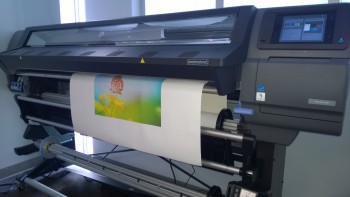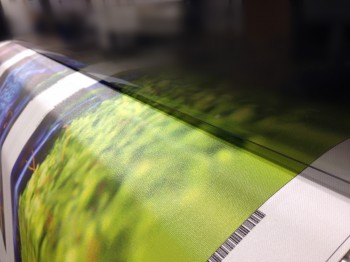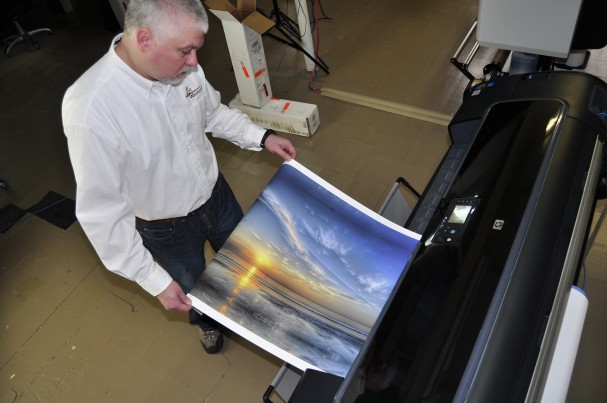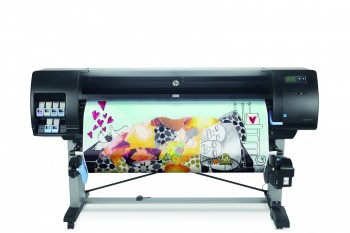 HP is offering a variety of rebates, bundles and trade-ins on the HP Latex and HP Designjet printers, including print-and-cut bundles with Graphtec, SAi and Summa.
HP is offering a variety of rebates, bundles and trade-ins on the HP Latex and HP Designjet printers, including print-and-cut bundles with Graphtec, SAi and Summa.
HP, Graphtec and SAi have partnered on a print-and-cut bundle that provides up to $1,499 in savings with the HP Latex 310 or 330, the Graphtec FC8600 – 130/160 and SAi FlexiPRINT HP Premium Edition Upgrade from HP Basic Edition.
HP and Summa are also offering a print-and-cut bundle with the HP Latex 310 and 330 with a SummaCut D140 or D160 that includes a $1,000 instant rebate and a discount on the RIP upgrade. Both print-and-cut bundle specials are good through Sept. 30.
Either way, you can get a $1,000 instant rebate on the HP Latex 310 Printer and HP Latex 330 Printer with or without the bundle at LexJet. Plus, Upgrade to Latex with the new HP Latex 360 Printer: trade in any qualifying solvent printer or printer-cutter 30″ or wider, 42″ or wider large-format aqueous printer, HP Latex 210, 260 or 280 Printers, or HP Designjet L25500 or L28500 Printer.
HP also introduced a new portfolio of Care Packs and Service Contract options for the new HP Latex 300 Series Printers. Contact a LexJet printer specialist at 800-453-9538 to find out about rebates on Care Packs and Service Contracts.
If you’re looking for a wider print area, HP is also offering $6,000 cash back on the HP Latex 280 104″ inkjet printer when you trade in an eligible solvent or aqueous printer by Sept. 30. The HP Latex 280 allows you expand your offerings to include high-quality grand-format backlits, banners and soft signage.
HP Designjet Aqueous Printer Deals
New this month, HP announces a big ink deal on its new HP Designjet Z-series printers: Buy an HP Designjet Z6800 Photo Production Printer with a full set of HP Original Vivid Photo Inks (773A) and get a second full set free, a savings of $2,100 on HP 773A inks. You can also get the same deal with the new HP Designjet Z6600 Production Printer, with savings of $1,600 on the HP 773A inks.
If you’re looking to upgrade your aqueous inkjet printer, HP has a great deal for you with its HP Designjet Cash In & Trade Up promotion. When you trade in a qualifying printer you can get up to $2,500 cash back.
HP Designjet printers to which you can trade up include the HP Designjet Z6200 42-inch printer (up to $2,500 back), HP Designjet T1500 36-inch Post Script technical printer (up to $1,000 back) or HP Designjet T1500 36-inch technical printer (up to $750 back).
We use the phrase “up to” since you’ll need to provide a serial number and return the formatter board or motherboard for your qualifying trade-in printer to receive the maximum. You can also provide just the serial number for less cash back ($250). The Designjet Cash In & Trade Up promotion runs through Sept. 30.
There is also a $400 instant rebate on the HP Designjet T520 36-inch printer good through Sept. 30. Additionally, LexJet is offering a limited number of the new HP Z-series printers at a special discounted price, including the HP Designjet Z6600 Production Printer and the HP Designjet Z6800 Photo Production Printer.
To find out more, including qualifying trade-in printers, bundle deals on the HP Z5400 and HP Z5200, and for direction on what printer would work best for you, contact a LexJet customer specialist at 800-453-9538.

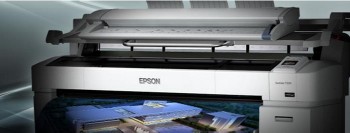 The latest rebates from Epson listed below are good through Oct. 31. Here are the rebate details, grouped by printer type (Stylus Pro aqueous, SureLab D-Series, SureColor Technical printers and the SureColor S-Series)…
The latest rebates from Epson listed below are good through Oct. 31. Here are the rebate details, grouped by printer type (Stylus Pro aqueous, SureLab D-Series, SureColor Technical printers and the SureColor S-Series)…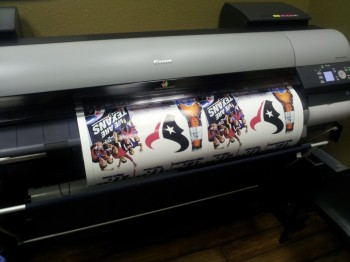 Call a LexJet printer specialist at 800-453-9538 to take advantage of the following instant and mail-in rebates on Canon imagePROGRAF (iPF) printers through Sept. 30, as well as the personal support and service and fast product delivery you always get from LexJet… First up, get a mail-in rebate of $800 on the
Call a LexJet printer specialist at 800-453-9538 to take advantage of the following instant and mail-in rebates on Canon imagePROGRAF (iPF) printers through Sept. 30, as well as the personal support and service and fast product delivery you always get from LexJet… First up, get a mail-in rebate of $800 on the  Canon is offering special pricing on its imagePROGRAF (iPF) printers through Sept. 30, including introductory sales prices of up to $1,500 on the new SE Series (
Canon is offering special pricing on its imagePROGRAF (iPF) printers through Sept. 30, including introductory sales prices of up to $1,500 on the new SE Series (